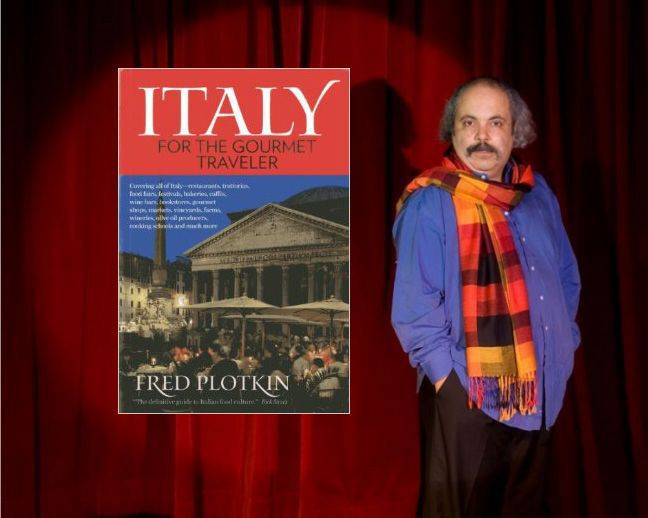Exploring Italy Beyond the Traditional Tourist Experience
Fred Plotkin’s Italy for the Gourmet Traveler is a must-have for all lovers of Italian food and culture. As the cover of the book says, this thick volume (it weighs 2.3 pounds!), now available in e-book edition as well, covers “all of Italy... restaurants, trattorias, food fairs, festivals, bakeries, coffee bars, wine bars, bookstores, gourmet shops, markets, vineyards, farms, wineries, olive oil producers, cooking schools... and much more.”
Italy for the Gournet Travelers was first published in 1996 and is now in its sixth edition,” says Plotkin, a frequent contributor to i-Italy. “It has gone through an extensive revision process. The way Italian people eat now is different from decades ago, so the material had to be updated. Some examples? Globalization and the economic crisis have influenced the way Italians dine. People do not take long lunch breaks as they used to, there is no time to spend hours at the table. So lunch has become a quick meal, mostly it consists of one dish only. In northern Italy people have Insalatone, large American-style salads. In the past salad was eaten after the main course, but now it has become the main course for many.
Fred Plotkin presents thousands of interesting facts in these pages and takes us beyond the traditional tourist experience through the nation’s many regions, including the islands of Sicily and Sardinia, and into more than 500 cities, towns and hidden villages.
“I take readers by the hand and guide them through my favorite land,” says Plotkin, “a land which is diverse in terrain, history, and tradition. I like to give readers who are traveling through Italy a chance to discover its distinctive foods and wines. Practical advice. Each area has specialties, so look for them on the menu. Let’s talk about a city I like: Ferrara. Ferrara is in Emilia Romagna, just a few kilometers north-northeast of Bologna. Bologna is the city everybody talks about when thinking of this region, but there are many more realities, and Ferrara is one of them. A specialty here is Salama (not salame) da sugo, an intensely flavored and strongly spiced sausage made with coppa di collo (pork neck), pancetta (pork belly), lardo di gola (neck fat), fegato (liver), and lingua (tongue). The sausage is commonly served sliced on a bed of mashed potatoes. If you’re a vegetarian, try cappellacci con zucca, pumpkin ravioli served with a butter and sage sauce...Meat lovers can enjoy them too with a meat ragout. Once in Ferrara visitors should also spend some time away from the dinner table. A must-see is the Museum of the Risorgimento and Resistenza, a place that chronicles the participation of the local patriots in the epic deed of the Italian Risorgimento (the 19th-century movement for Italian unification that culminated in the establishment of the Kingdom of Italy in 1861). I believe that a person should not just focus on the gastronomy of a place but understand its larger culture in order to experience it fully.”
Italy for the Gourmet Traveler entices readers to experience new places. As Plotkin puts it: “If you are in Lombardy, don’t spend all your time in Milan. Go to Mantua. If you are in Liguria, there is not only Genoa but also San Remo. Check out Martina Franca in Apulia, Sulmona in Abruzzo or Siracusa in Sicily. Each place has people who make world-famous regional specialties and a unique local history that makes it come alive.”





































i-Italy
Facebook
Google+
This work may not be reproduced, in whole or in part, without prior written permission.
Questo lavoro non può essere riprodotto, in tutto o in parte, senza permesso scritto.